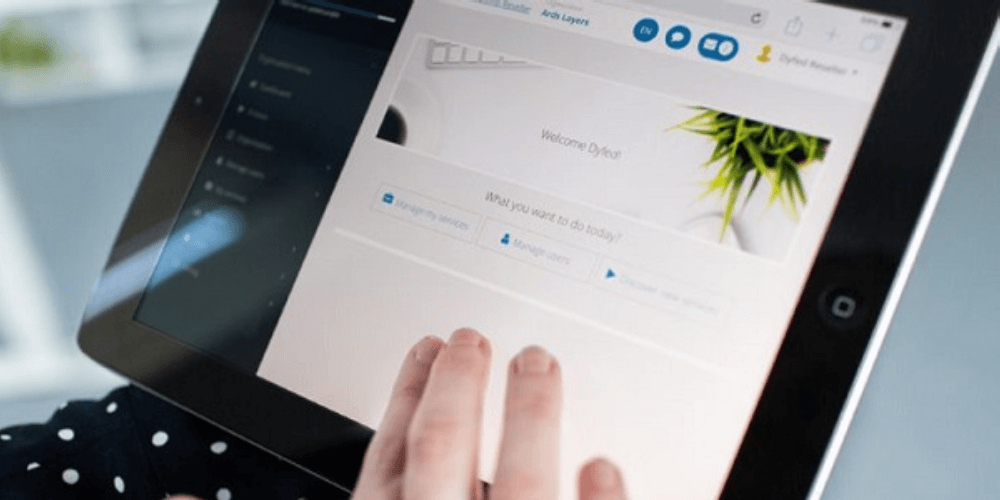Today customers live in a society where convenience, speed and efficiency reign supreme.
In just two decades, big-name internet companies such as Alibaba, Amazon, Facebook and Netflix have transformed how we consume, behave and interact.
Automated business processes and customer self-service have helped catalyze the growth of these huge corporations. The ability to self-serve has entered almost every aspect of our lives, from checking out at the grocery store, to checking into the airport, to banking, or ordering fast-food online.
Business success will increasingly revolve around empowering customers by offering them self-service capabilities.
In fact, according to a study conducted by Walker, a global consulting firm, customer experience will overtake price and product as a key brand differentiator by 2020. Implementing the right self-service tools and processes is therefore more important today than it has ever been.
Self-Service Tools Aren’t Just for the Biggest Players
While company goliaths like Amazon are setting and raising the benchmark for customer self-service and automation, it’s the small, versus medium-size companies that are leading the way in adopting automated business processes.
This is because they rely heavily on automation to make their financials work. Smaller companies typically employ inbound and content marketing techniques to generate awareness and sales.
They also use customer self-help mechanisms (forums and FAQ pages, for example) in much the same way as the e-commerce giants do. Automation is enabling companies to become agile.
Important for all businesses is the fact that consumers are very rapidly transferring their expectations from the largest websites onto every site they engage with. Ruled by convenience, the majority of customers (66%) actually prefer self-service when resolving issues associated with their products and services.
Self-Service Equals Scale
Today Amazon’s paid subscription service (Amazon Prime) has over 100 million subscribers. Media services provider, Netflix has over 137 million. These companies could not have reached this vast customer base without almost fully automated business models.
Automation and self-service have three distinct advantages;
1. Customers are happier because they have access to a broader selection of products and services that they can purchase and, crucially manage, anytime and anywhere.
2. The 24/7 revolving door nature of a website with a self-service functionality increases traffic and buys, promoting organic business growth and quicker time to value.
3. Billing automation, and allowing self-service for subscription management significantly reduces overhead costs.
Self-service models require little or no selling, saving time, labour and resources. It is however essential that the self-service set-up is done right. Not only do prospective customers need to be presented with a clear view of the value and benefits of the products on offer. According to a 2017 survey conducted by Microsoft, 90% of customers expect a company or organization to offer customers a self-service portal where they can have full control of their items and services.
Enabling consumers to easily buy, renew and make changes in their own time and giving them access to a comprehensive and intuitive resource by creating a knowledge base on their dashboard takes pressure off sales teams, customer services and tech support. Sales can focus on cross and upselling, or other higher value activities. Customer services and tech support can deal with more complex queries, which should in turn improve staff morale and productivity.
Customer Self-Service Provides Data Which Provides Business Insights
Consumer data has become an essential revenue driver for businesses. In fact, the six most valuable international companies in the world are technology firms that rely heavily on data.
Offering customers access to a self-service portal is an excellent way to collect consumer information, provided it is done securely and respects data privacy.
Not only can businesses easily harvest basic contact data for each user through a self-service portal – they can also identify consumers’ locations, their service and product preferences, and their buying behaviour.
The company can see how many products and services have been purchased – and in the case of a service – whether, for example, it is even being used.
Consumer data gathered through a self-service portal can also allow a business to measure its growth; in terms of users, sales, sales per service, per country and so on. Being able to filter this valuable consumer data supports an informed strategy that allows sales and marketing teams to better target their campaigns.
Customer Portals Boost Transparency and Trust
Customers no longer want to deal with streams of e-mails, invoices and paperwork. They want a one-stop shop where they can seamlessly view, buy and manage their products and services.
Customers are also getting used to, and now therefore expect to have, a breakdown of costs.
Allowing customers to log in and see their historic, monthly and ongoing spend enables them to analyse their costs, which is especially useful in a business-to-business scenario, where these costs can then be allocated against budgets.
Being transparent with costs and usage gives customers confidence and, as a consequence, enhances the seller’s credibility, boosting customer loyalty in turn.
Download our MSP Guide
Share this
You May Also Like
These Related Stories

Why Customer Self-Service is Great for Microsoft CSP's

11 Good Reasons to Give Your Customers a Great Self-service Experience



